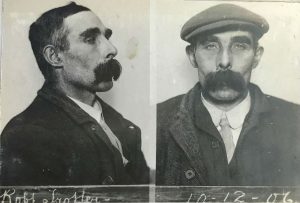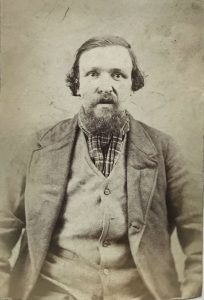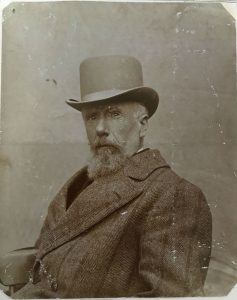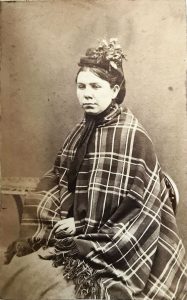A FASCINATING display of crime mugshots from the past forms the centrepiece of a new exhibition in Edinburgh.
It features the faces of thieves, confidence tricksters and pickpockets who felt the long arm of the law between 1870 and 1917.
The images of the Victorian and Edwardian era crooks are accompanied by transcripts from criminal trials which reveal fascinating personal details about the offenders, their victims and the society that produced them.
The National Records of Scotland (NRS) aims to provide an insight into the development of policing and detection methods in Scotland.
The free exhibition, at General Register House, also sheds new light on the development of photography as a tool by the police.
Among the faces in ‘Rogues Gallery – Faces of Crime 1870-1917’ is that of 25-year-old James Donovan, born in Mauchline, East Ayrshire.
He faced several charges of pickpocketing plus single charges of assault and larceny (theft or personal property) in 1901.
Flat-capped and walrus-moustached Robert Trotter of Berwickshire could be a direct descendent of Only Fools and Horses’ Rodney and Del Boy as he was charged with selling stolen goods as well as housebreaking and theft of sheep.
Bearded William Stewart looks like a rabbit caught in the headlights as he is snapped after being arrested for theft in 1874.
17-year-old Lily Barr of Wishaw suffered the same fate in 1911, as did Joan McLean in 1874, scruffy looking Irishman James McGuire in 1906 and Bridget Duffy from Edinburgh.
Thomas Queen, photographed in 1910 aged 23, was charged with several offences, most of which were theft and robbery.
In January 1900 William Paterson, who had an alias of John McDonald, was a 58-year-old Ironmonger whose crime is not disclosed, but he had ten previous convictions.
Not all of the pictures show classic dishevelled looking criminals – American Horace William Chapman looks every inch the Edwardian gentleman despite being charged with “Stg. Pictures, False Pretenses”. It is presumed that “Stg” refers to stealing.
Likewise Elizabeth Stewart, photographed in 1873, faced charges for “falsehood, fraud and viceful imposition”, but her appearance is more that of a classy Victorian lady than a deceitful crook.
Jocelyn Grant, outreach activist at NRS, said the exhibition revealed “fascinating personal details about criminals, their victims and the society that produced them”.
He added: “Rogues Gallery demonstrates how much we can learn about people of the past from criminal records and provides an insight into the development of policing and detection methods in Scotland.
“The exhibition also includes a snapshot of the development of photography, as police and their forensic assistants began to realise its potential to record crime scenes and other physical evidence.”
Veronica Schreuder, also an outreach archivist with NRS, added: “The gallery is a fascinating snapshot into the way of life at the time.
“It allows us to put faces to the names and to engage with the stories. We’ve got thousands of stories but there are some larger than life faces to put to them.”
Veronica added: “You do tend to feel a a bit sorry for these people but then you remember what they’ve done. But life was hard back then.
“It’s really a story of how police detection has changed. Before that they were relying on descriptions of people.
“So it tells the story of how police detection evolved over this time and how society reacted to that.”





